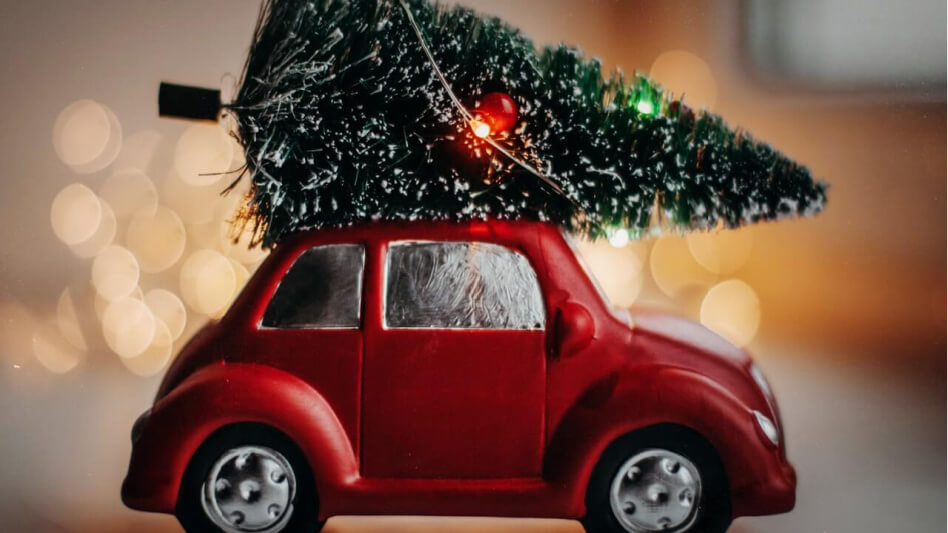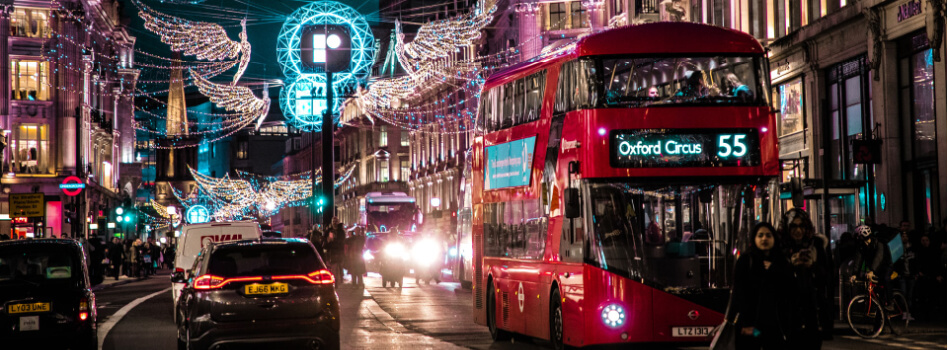Try one of our ready made Ecards
Everything is done for you with out ready made ecards. All you have to do is put in your own unique content and choose who to send it to.
Our Services
Try one of our ready made Ecards
Everything is done for you with out ready made ecards. All you have to do is put in your own unique content and choose who to send it to.

Christmas is known as a time of giving, a time of excess and – unfortunately – this also means an excess of emissions.
Directly or indirectly, we all contribute more to our carbon footprint over the festive period than any other month. Think about it, and you’ll understand. Deliveries, crossing the country to visit family, purchases, and much more.
But, just what contributes to a larger carbon footprint at Christmas? Well, eCo2 Greetings is here to explain how you are increasing your footprint over the holidays. We’ll also explain how you can reduce it easily and without spending huge amounts.
Read on to find out what the carbon footprint of Christmas is and how you can reduce it…
A carbon footprint is the total greenhouse gas emissions directly or indirectly caused by an individual, event, product or organisation.
This can include anything that causes the burning of fossil fuels, resulting in greenhouse gas emissions. Examples would be driving to work, energy to power or heat your home – where it comes from – and waste disposal.
Read more: The Misconceptions of Going Green
At Christmas, we can receive up to 60 million unwanted gifts, and, on Christmas Day, we waste the equivalent of 4 million dinners. Thanks to all our presents, we discard 108 million rolls worth of wrapping paper. Finally, when the festivities are over, there will be upwards of 7 million real Christmas trees to dispose of.
Learn more about our incredible eCards – Premium and for Christmas
This is all before we get to the gifts we keep, food we eat and the miles we travel over the holidays.
When it comes to Christmas, there are certain causes of a larger carbon footprint and we’ve outlined them below before going into more detail:

Energy consumption at Christmas is much higher than any other time of the year, due to lighting, heating and travel.
Lighting will include your home lights with the days being shorter as well as decorative lights on your tree and around your property. The same can be said for your heating. More of your household are home and in different rooms, requiring a higher use. When you do have the heating on, only heat the rooms you need to prevent wasting energy.
What to do:
Travel consumption over the holiday period can be down to “love miles” – travelling across the country to see friends and relatives or to buy and deliver gifts.
Read more: The Best Eco Christmas Markets to Visit This Festive Season
For your car, make sure it’s winter-ready, for the environment and safety. Check tyre tread and pressure, use higher gears safely, and don’t leave the car idling in queues. Also, if you have it, avoid using the start/stop facility – starting your car is the most wasteful part.
Try driving at quieter times of the day and in higher gear – on a motorway, for example – to save fuel and carbon emissions. If you are travelling across the country, try taking the train or car share. For example, a car journey from London to Liverpool produces 62kg of CO₂e. The equivalent rail journey is 15kg per person.
Read more: How can businesses improve their carbon footprint
If you want to go abroad for Christmas, flying will massively increase your carbon footprint.
What to do:

The type of food you eat at Christmas is important for reducing your carbon footprint – think local and in-season.
Discover our Christmas games, perfect for breaking the working week in December
Wasting food doesn’t just waste nutrients – it wastes land, water and energy needed to break it down once it’s sent to the dump. The carbon footprint of wasted and uneaten food is estimated at 3.3 gigatonnes of CO₂e worldwide. This means that food wastage is the third highest emitter. 20-30% of all human-associated greenhouse gas emissions come from the global food system.
Prepare and plan for the right amount of food to minimise your waste throughout the period and the big day. Let people serve themselves so they only take what they want. If any food is left over, reuse it in meals and lunches – hence leftovers. Ensure wasted food does go in the food waste bin.
Learn more about our incredible eCards – Premium and for Christmas
What to do:

Gift-giving at Christmas is responsible for a huge amount of waste, from unwanted presents to wrapping paper and toys in crackers.
It can be hard to know the true impact of what we buy. Plastics are known for their damage, but what about the impacts of electronic goods? The resources used for making and shipping them and the energy they will consume when in use all add up. Especially when the UK will dump an average of up to 230,000 tons of unnecessary Christmas gifts.
Learn more about our Christmas eCards for the upcoming season
And what about the wrapping and cards? Each year, we produce around five extra sacks of waste per household over Christmas. This is equivalent to an extra 1.4 tonnes CO₂e. Consider reusing wrapping paper and packaging, such as boxes. You can also try reusable wrapping fabric, ecards and recyclable wrapping paper.
The same goes for Christmas cards. Avoid buying glossy or glittery wrapping paper and cards as most are unrecyclable.
Read more: What to Write in a Business Christmas Card
When you think about Christmas crackers, most of the prizes go in the bin. Unfortunately, most are made from plastic. Consider buying crackers with just the jokes and hats inside where it can all be recycled afterwards. You could even make your own cracker to add a more personalised touch.
What to do:

It’s a fairly big debate, whether to buy a real or fake Christmas tree, but there are benefits and drawbacks to both.
First of all, it’s a mistake to believe an artificial tree is more environmentally friendly. The key product of artificial trees is plastic. They are manufactured from oil, which creates most of its carbon footprint. Then, there are the industrial emissions produced when the tree is made. The trees are often shipped long distances before arriving in the shop and on to your home.
Learn more about our eco-friendly mission
While an artificial tree may last you for 10 years, an average two-metre tree has a carbon footprint equivalent to about 40 kg or greenhouse emissions. This can be more than twice that of a real tree that ends up in landfill and more than 10 times a real tree that is burnt. An artificial tree has lower emissions than real trees if they are used for 5 – 10 years.
For real trees, they can vary for their environmental impact. A live tree that is kept and allowed to grow from year to year is best. You can grow one in a pot to bring inside each Christmas to decorate. Unfortunately, most real trees are already cut. When buying a tree, choose it from a local and sustainable source to limit your carbon footprint.
Read more: The Carbon Footprint of Email vs Postal Mail
Also, you need to be aware that intensively farmed Christmas trees are often sprayed with chemicals that damage the local biodiversity. Always buy a Forest Stewardship Council-approved tree to improve your environmental impact. Make sure the tree is recycled at the end of its life, too, rather than left in landfill, where it will release methane.
What to do:
Eco 2 Greetings is here to help your business with our selection of high-quality eco-friendly eCards – you can quickly design your own with a choice of templates available, choose from our range of Premium eCards which will include animation, or get something extra special with our completely bespoke eCard service!
Trusted for more than 10 years by some of the world's bigged brands.





